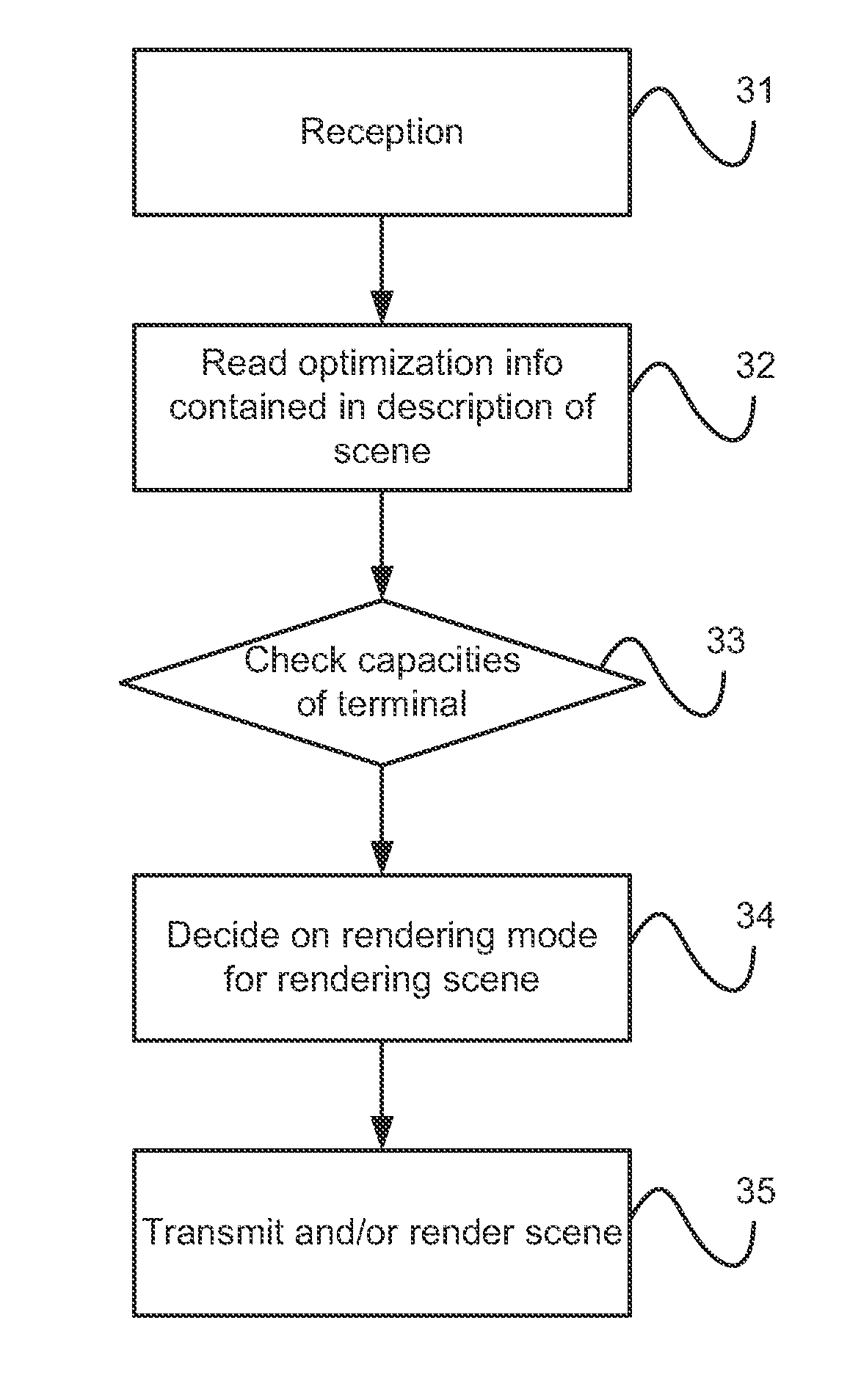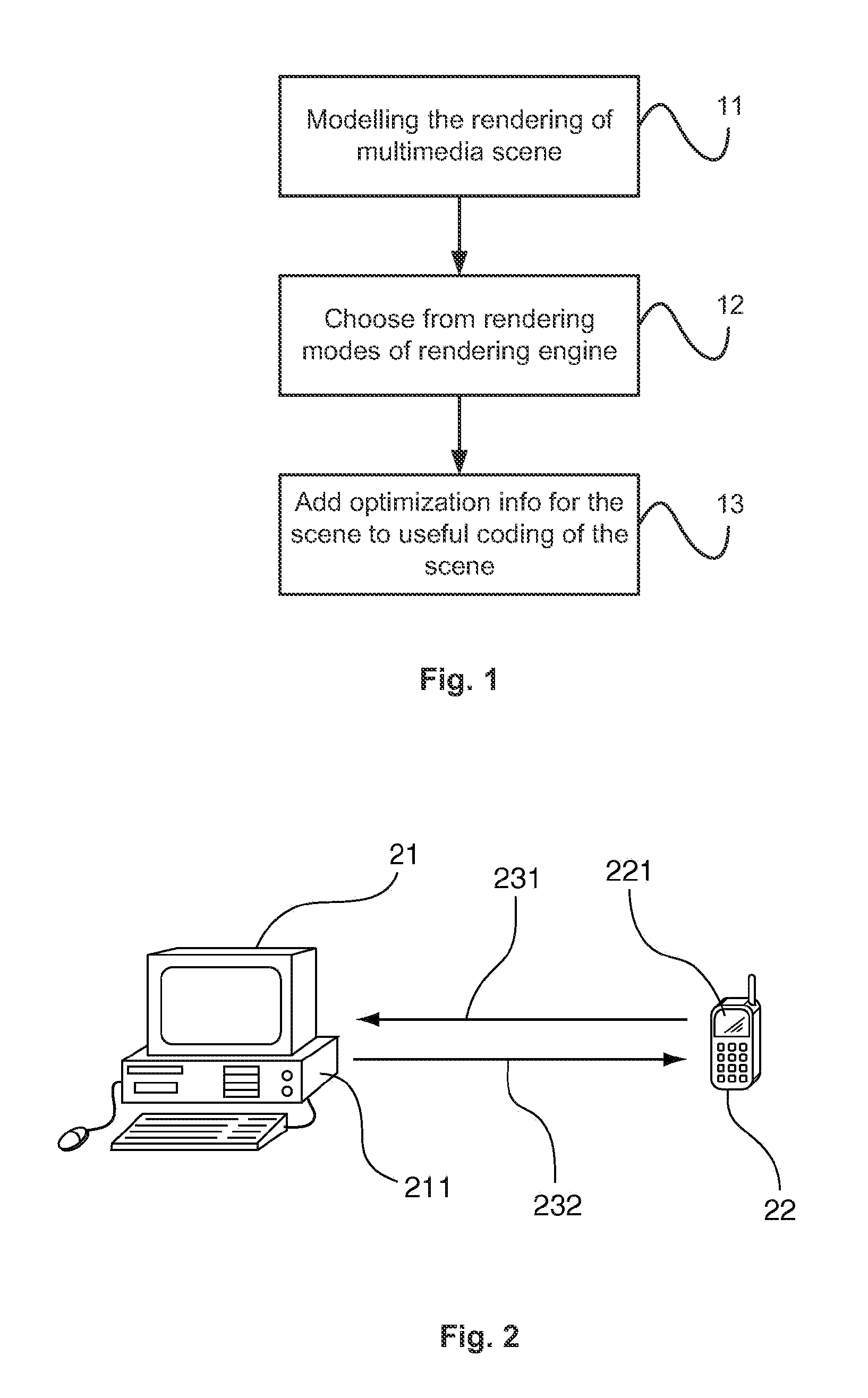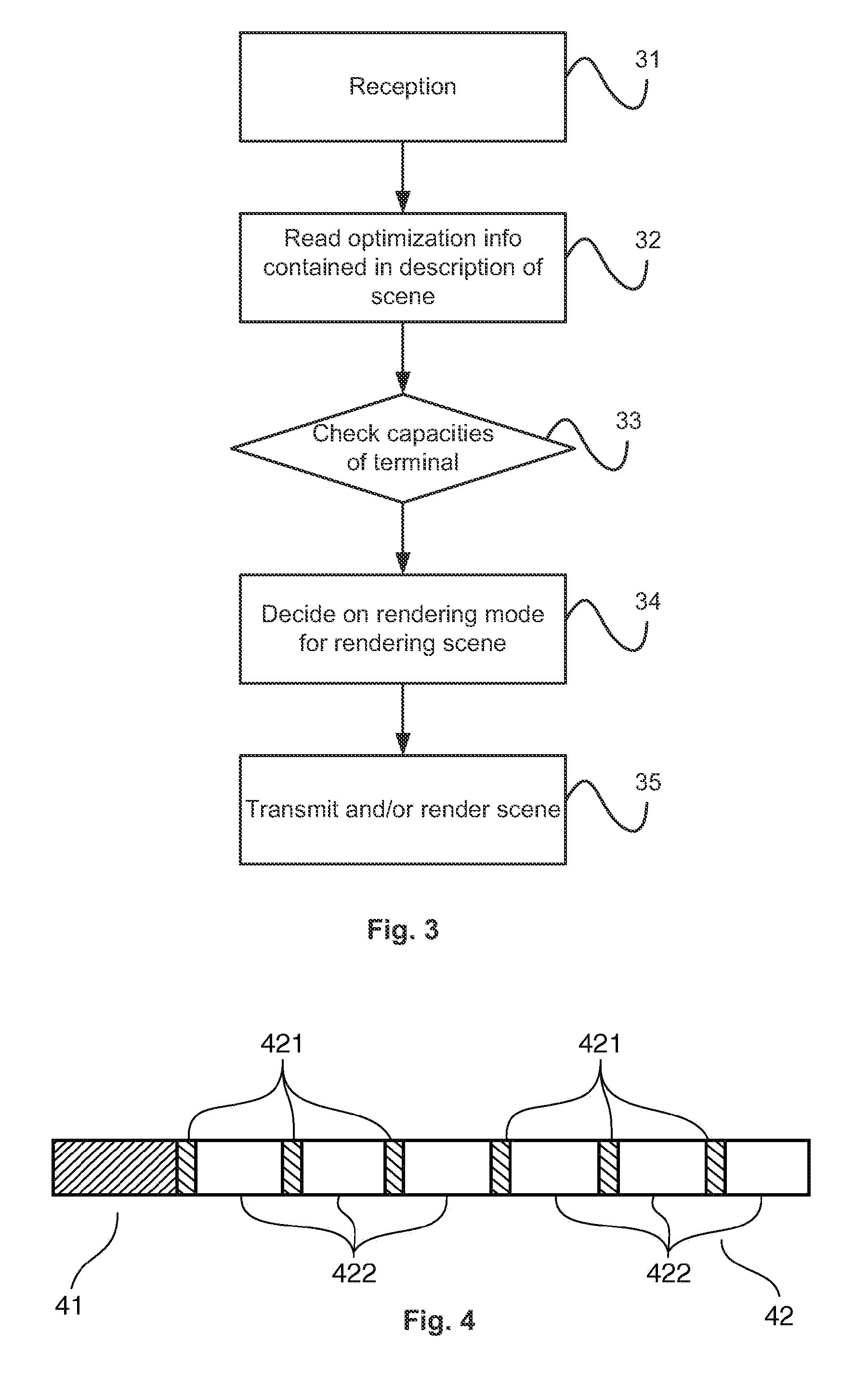Method of optimizing rendering of a multimedia scene, and the corresponding program, signal, data carrier, terminal and reception method
a multimedia scene and program technology, applied in the field of multimedia scene optimization, can solve the problems of not being able to manage the full complexity of the standard, difficult choice that determines rendering engine no longer able to make these analyses and rendering mode choices, etc., to achieve the effect of optimizing the rendering of the scene and fast rendering
- Summary
- Abstract
- Description
- Claims
- Application Information
AI Technical Summary
Benefits of technology
Problems solved by technology
Method used
Image
Examples
Embodiment Construction
1. General Principle
[0065]The general principle of an embodiment of the invention is based on a method of describing a multimedia scene comprising optimization information, which allows judicious choice for the rendering device and use of a particular rendering algorithm.
[0066]It should be noted that the rendering is the infographic method that consists of animating a multimedia scene. The rendering engine can in particular be caused to manage animations of the “flash” type, digital films, etc.
[0067]The aim of an embodiment of the invention is the indication of information for optimization of rendering respected by a scene that must be updated over time.
[0068]In relation to FIG. 1, the general principle of modelling of an interactive multimedia scene according to an embodiment of the invention is presented.
[0069]An author designs an interactive service containing multimedia scenes with a variable complexity level.
[0070]Thus a first step 11 for the author consists first of all of the...
PUM
 Login to View More
Login to View More Abstract
Description
Claims
Application Information
 Login to View More
Login to View More - R&D
- Intellectual Property
- Life Sciences
- Materials
- Tech Scout
- Unparalleled Data Quality
- Higher Quality Content
- 60% Fewer Hallucinations
Browse by: Latest US Patents, China's latest patents, Technical Efficacy Thesaurus, Application Domain, Technology Topic, Popular Technical Reports.
© 2025 PatSnap. All rights reserved.Legal|Privacy policy|Modern Slavery Act Transparency Statement|Sitemap|About US| Contact US: help@patsnap.com



